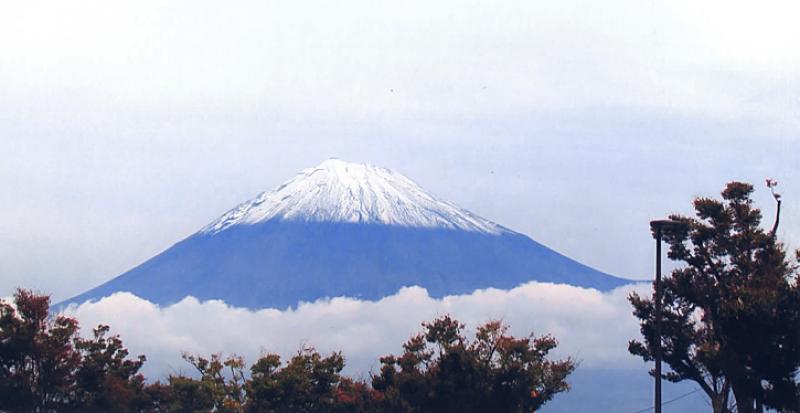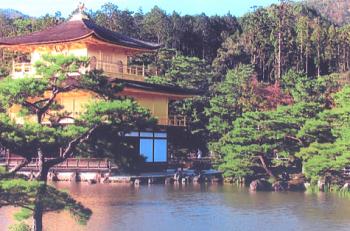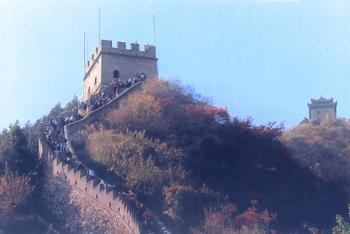Hitting the highlights on a luxury cruise from Tokyo to Shanghai
This article appears on page 28 of the August 2019 issue.
My international wanderlust had its inception during my Army days in Saigon in the late 1960s. I got a taste of Penang and Hong Kong while on leave, and travel within Asia has captivated my attention ever since.
The plan
In mid-October 2018, I flew nonstop on Japan Airlines (codeshare with American Airlines) from New York to Tokyo for a 14-day cruise from Yokohama to Shanghai. Another nonstop flight, this time with China Eastern Airlines (codeshare with Delta), brought me back to JFK airport at the end of my journey.
The service and meals aboard Japan Airlines were exceptional, but I found the food served by China Eastern horrible.
This voyage was aboard Holland America Line’s MS Westerdam, the third of the company’s four Vista-class ships on which I have traveled.
A pre-cruise package that I arranged through Holland America (Seattle, WA; 877/932-4259, holland america.com) included a 3-night stay at the Keio Plaza Hotel in Tokyo. My principal reason for arriving a few days early, in addition to taking some sightseeing excursions, was to provide myself with extra time in the event of delays caused by, for instance, inclement weather at home.
The cruise featured ports of call primarily in Japan and China plus a single-day stopover in South Korea, a nation that I had never visited. Our itinerary included Shimizu, Osaka, Beppu, Fukuoka and Sasebo in Japan, Busan in South Korea, and Dalian, Tianjin, Qingdao and, finally, Shanghai in China. Combining Japan and China into a single vacation provided the perfect itinerary choice for me.
Onboard luxury
I booked one of only two Pinnacle suites on board, the ship’s highest category of stateroom. It had an estimated 1,150 square feet of cabin space, inclusive of a verandah and plenty of storage space. By upgrading from a Neptune suite and waiting until around six weeks before sailing to do so, I paid a total of about $17,000, amounting to a savings of approximately $11,000 off the price that would have been charged if I had reserved it earlier.
My stateroom included a separate living room, a dining area, a bedroom with a king-sized bed, an oversized whirlpool in the bathroom and a hot tub outside on my spacious balcony.
There was more than enough room in my quarters for the cocktail party I hosted for a number of my new acquaintances on our final sea day, for which I saved the bottle of champagne that had come with the room.
Among the amenities appurtenant to Neptune and Pinnacle suites is complimentary laundry, of which I availed myself on virtually a daily basis. With such a convenience, I didn’t have to pack as many items of clothing as I would have otherwise.
I was also accorded the option of having breakfast at the Pinnacle Grill, one of the ship’s two specialty restaurants, which I frequented on a near-exclusive basis.
Another reason for reserving either a Neptune or Pinnacle suite is exclusive use of the Neptune Lounge. A continental breakfast was always available there, which I opted for on a couple of mornings when very early shore excursions were scheduled.
Over my many years of international travel, I always have preferred sailing with Holland America because they feature mid-sized ocean liners rather than the large ships, each with a capacity in excess of 3,000 to 5,000 passengers, used by some of the other cruise lines.
Japan
In 1977, I had a memorable experience traveling to Japan as part of a land tour, but the itinerary for my 2018 cruise included a number of cities that were completely new to me (other than Tokyo and Kyoto).
The Westerdam’s first stop after departing Yokohama was Shimizu, where I had arranged for a tour that included the Shinto Fujisan Hongū Sengen Taisha shrine. Among my favorite features on the grounds of the shrine were a footbridge and a statue depicting a mounted archer.
But, the principal reason for my booking this particular excursion was to see Mount Fuji, which previously I had only glimpsed between buildings while aboard a train. Known officially as Fujisan or Fujiyama, Mount Fuji is Japan’s highest and most famous volcanic mountain peak and probably is the most impressive natural site in the country.
Unfortunately, because the skies were completely overcast on the day of my visit, it was impossible to get a good photograph of myself with the mountain in the background.
Kyoto
The next scheduled port of call was Osaka. Before leaving home, I had purchased a shore excursion through Holland America to travel from there for a return visit to Kyoto, which, along with Tokyo, was on my “must see” list.
I had my doubts, however, that the ship would be able to dock at Osaka or that the excursion to Kyoto would proceed as scheduled, since Typhoon Jebi had swept through the area a month before. Reports indicated that the storm had caused extensive damage, including to some of the historic shrines in Kyoto.
However, I was able to visit Kyoto, and I didn’t notice any degree of typhoon-related damage to the various attractions I toured in the ancient capital.
My shore excursion started with a guided visit to Heian shrine, described as the most important Shinto shrine in Kyoto. It entailed a fairly long walk; fortunately, I was able to complete it.
The shrine, constructed in the late 19th century to commemorate the 1,100th anniversary of the founding of Kyoto as Japan’s capital, contained an extensive nature trail, including an old-time trolley car on the grounds and a traditional garden.
Next was Nijo Castle, a UNESCO World Heritage Site. Because of my limited mobility and the extensive amount of walking required there, our guide offered assistance, an exemplary service for which I felt a gratuity would be appropriate, even though I was aware that tipping is not expected in Japan.
The final attraction on this excursion was the magnificent Kinkaku-ji, a Zen Buddhist temple otherwise known as the Golden Pavilion. Containing gold leaf over lacquer on the top two stories, the Golden Pavilion, which was very impressive, is one of the most photogenic attractions in Kyoto.
Because of heavy traffic, my tour bus did not arrive back at the pier until well after the time scheduled for the Westerdam to set sail to the next port. This is why I always purchase my shore excursions directly through the ship rather than independently at the dock, since the staff will know where you are and the ship will wait until you return. On this particular cruise, this was the only occasion when an excursion bus was late in returning to the dock.
Beppu and Fukuoka
After departing from Osaka, the ship called at Beppu, where the itinerary of my scheduled excursion included Usa Jingū shrine and the Boiling Hell Hot Springs.
Access to the 8th-century Usa Jingū requires an extremely long walk. Because of this very time-consuming hike, I proceeded only part of the way, so I did not see as much as others in my party.
The primary reason for my booking this particular excursion, however, was to visit the hot springs, its very name evoking in my mind something that I wanted to witness.
Upon entering the grounds of this attraction, I was met with a distinctive sulfur odor arising from the series of pools. Because I didn’t take a towel with me, I chose not to join a group of people who were soaking their feet in one of the smaller pools, but I probably should have at least dipped one of my hands in to evaluate the water’s soothing effect for myself.
At the end of this tour, it began to sprinkle. Although we had threatening skies throughout most of our time in Japan, this was our first day of rain, though it didn’t have an adverse effect on any of our sightseeing activities.
My next excursion, to Fukuoka, included two Shinto shrines — Dazaifu Tenmangū and Kushida, located nearby in Hakata — as well as a visit to Fukuoka Tower. Constructed in 1989, the tower was the least interesting of the attractions visited, and there was a far-less-than-spectacular view from its 123-meter-high observation deck. I wouldn’t have objected to skipping this tower.
On to South Korea
After our final port in Japan, Sasebo (from where I took a day tour to Nagasaki, including a visit to the truly inspiring Peace Park), the Westerdam continued on to Busan, South Korea.
There, I joined an excursion featuring Bulguksa Temple plus Gyeongju, known as a museum without walls, and an area containing ancient tombs. All of these attractions were located a significant distance from the city.
Dating from the 6th century and rebuilt in 751, Bulguksa Temple was one of the first sites in South Korea to be assigned World Heritage status. I was able to walk through the entire complex, ending at a temple featuring a golden Buddha seated in the lotus position. The temple also included several of what our guide described as national treasure relics, including a pagoda and other statues representing Buddha.
Our last stop before returning to the ship was the National Museum at Gyeongju. The museum’s collection included statuary and pottery as well as a display of swords and a golden crown. We were informed that, while most of the antiquities contained in the museum are replicas, the golden crown is said to be authentic.
Continuing to China
Of the three nations covered by the itinerary, China was the only one that required a visa for entry. Further, because the ship sailed into international waters between Chinese ports, a multiple-entry visa was needed.
My visa ($140) was obtained at the Chinese consulate in Manhattan, which was very convenient for me, since it entailed only a subway ride and a crosstown bus to get there.
Dalian, which, in my opinion, offered considerably fewer sites of interest than any other place at which the ship docked, was the first port of call for the Westerdam in China. However, an unexpected highlight of this stop was a visit to a primary school, where a class of children sang several songs in Chinese, making up, to a large degree, for the tour’s shortcomings.
For visits to Beijing, the Westerdam docked at the port city of Tianjin, not departing until late the following afternoon. Although the ship was a considerable distance from any of the major sites, this afforded me the opportunity to experience nearly two full days of sightseeing activities.
On the first day, I opted for an excursion to the Great Wall, located north of Beijing, followed by a full-day guided tour of the Forbidden City in Beijing, itself, on the next.
Some passengers elected to leave the ship temporarily, traveling to Beijing and other cities (such as Xi’an to see the Terracotta Army) and returning to the ship a few days later. However, since I had traveled to China previously, I chose not to entertain such an option.
Beijing sites
It took our tour bus nearly four hours to access the Great Wall from the port of Tianjin. This excursion was truly a full-day experience; I believe it was close to 8 p.m. before our bus returned to the ship.
Visitors have the option of ascending the wall by way of either an easy or a hard route. In 1984, at the age of 42, I had no difficulty climbing the more difficult side all the way to the top after hearing that it afforded better views. This time, however, I found that it would be much too strenuous to negotiate even the easier route and therefore, wisely, had to be satisfied with taking a few photographs from the trail leading up to the top.
The bus journey the following day from Tianjin to the Forbidden City took a little over three hours. The only downside to this excursion was that I had to get up at 5 a.m. in order to make the 6:00 departure time.
In addition to the Forbidden City, this tour included Tiananmen Square and the Temple of Heaven.
Beijing’s Forbidden City, an immense complex of ornate buildings, was constructed during the 15th century as an imperial palace, serving as the royal residence for emperors from the Ming dynasty through the early 20th century. The movie entitled “The Last Emperor,” depicting the end of the Qing dynasty in 1912, was filmed there.
I found it most impressive, the entire complex covering close to 200 acres and consisting of several hundred buildings.
Qingdao
Qingdao was the last port of call before the cruise terminated in Shanghai. A city with German influence, Qingdao is famous for its brewing of Tsingtao beer.
My exploration there started with a guided tour of the Beer Museum at the Tsingtao Brewery. Although each of us was offered a glass of beer at the museum, I opted for only a taste, since drinking beer before 10 a.m. is something to which I am not accustomed. However, since this excursion featured an included lunch later in the day, I was able to enjoy a glass of Tsingtao at a more appropriate time.
We then proceeded to Zhanshan Temple, a Buddhist house of worship that also functions as a monastery. Constructed in 1945, it is a relatively recent addition to Qingdao.
The last destination of interest in Qingdao was the Catholic cathedral named for St. Michael, and it was impressive. Also, since the bus parked just around the corner from the church, I had no difficulty accessing it.
The ports at which the Westerdam docked in China entailed rather long walks from the ship to Immigration stations and, eventually, to our tour buses. In Qingdao, the trek was an unbearably lengthy and arduous undertaking for me. I was able to complete the route but only with a considerable degree of difficulty.
Shanghai
The Holland America cruise ended on the morning of our arrival into Shanghai, leaving me with two full days on my own in this modern, prosperous-looking city.
While in Shanghai, I stayed at the Longemont Hotel for two nights. My accommodations in this modern structure consisting of over 50 stories were comfortable.
From home, I had made arrangements for a full-day tour of Shanghai, with pickup and drop-off at my hotel. The first stop was the Shanghai Museum, containing exhibits of traditional dress, old coins, ceramics and works of art. I was most impressed by the varied statuary there. My only wish was that we had been given more time at the museum, since there were so many extraordinary exhibits.
I had visited the Jade Buddha Temple in 1984, and, without any doubt, revisiting it was the principal reason for extending my trip to include a stay in Shanghai. The temple, featuring two jade representations of Buddha, both from Myanmar, dates back to the late 19th century, and it was the definite highlight of this day trip.
Shanghai’s waterfront region, known as the Bund, was next on the day’s program. Although it does contain a number of historical buildings, it is now dominated by ultramodern structures — further testament to the city’s prosperity.
One of the last activities on this excursion called for a lengthy walk into the Old City of Shanghai. When I heard that the trek would entail over one hour of walking, the desire on my part to see as much as possible notwithstanding, I decided to stay behind and not cause any undue delay to anyone. Once the group was back on the bus, one member told me there had been constant walking, with no place to sit down in the Old City.
Summing up
This trip met my pre-cruise expectations, in great part because of the quality of the sightseeing and, in particular, my revisits to the destinations in Japan and China that remained on my “not to be missed” list. In addition, booking a Pinnacle suite aboard the Westerdam contributed very significantly to my overall enjoyment of the cruise.
Of the attractions experienced by me on this noteworthy trip, my favorite and, in my estimation, the most captivating were in Tokyo and Kyoto in Japan and Beijing and Shanghai in China. However, almost all of the ports visited added something of unique value to my overall knowledge and understanding of other peoples and cultures.



